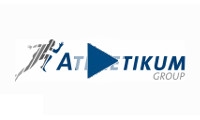Shoulder
Calcific tendinitis (Tendinosis calcarea)
Calcific tendinitis characteristically manifests itself with acute episodes of pain in the area of the rotator cuff. The causes of calcific tendinitis and the associated pain on extension are biologically active calcium deposits in the attachment area of the rotator cuff. Sufferers often have a mechanical impingement problem too, in which a bursa that is swollen up due to inflammation restricts the already narrow space for movement under the acromion even further.
What can be done for calcific tendinitis?
Extra-corporeal shockwave therapy (ESWT) is rarely successful in the long term. With certain types and sizes of calcification, and assuming there is no impingement, it can however be useful.
In the acute and extremely painful stage of the condition, inflammation-inhibiting injections can be of great benefit.
If the condition becomes chronic and resistant to treatment, arthroscopic intervention is usually required.
Conservative and safe - shoulder arthroscopy
Arthroscopic procedures offer simple and fast intervention. They allow the calcium deposits to be safely removed, and also the severely inflamed bursa or its adhesions to the surrounding tissue to be removed, which are the main causes of the pain. The same goes for a usually causative impingement problem, which can easily be resolved through precision decompression.
Generally speaking, only a short stay in hospital is required.
The arm can be actively moved the following day.





